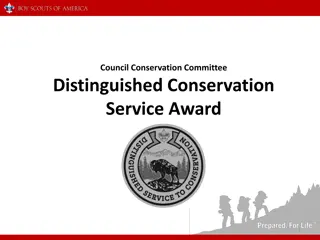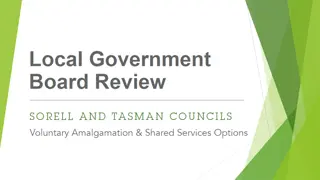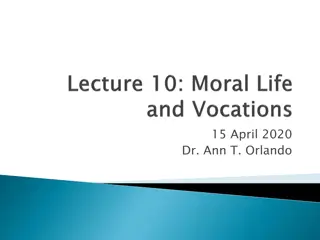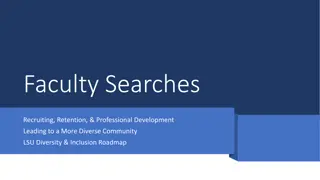Overview of Christological Controversies and Councils in Early Christianity
Explore the significant Christological controversies and councils in early Christianity, including debates on Arianism, Apollinarius, Nestorianism, Cyril of Alexandria, and more. Delve into the theological complexities and political issues that shaped the development of Christological doctrines in the Church.
Uploaded on Oct 03, 2024 | 0 Views
Download Presentation

Please find below an Image/Link to download the presentation.
The content on the website is provided AS IS for your information and personal use only. It may not be sold, licensed, or shared on other websites without obtaining consent from the author.If you encounter any issues during the download, it is possible that the publisher has removed the file from their server.
You are allowed to download the files provided on this website for personal or commercial use, subject to the condition that they are used lawfully. All files are the property of their respective owners.
The content on the website is provided AS IS for your information and personal use only. It may not be sold, licensed, or shared on other websites without obtaining consent from the author.
E N D
Presentation Transcript
Lecture 19: Christological Controversies and Councils 7 November 2019 Christological Controversies 1
Introduction Refresher: 4th C Christological Controversies Arians and Apollinarians Nestorian Controversy Cyril of Alexandria Monophysites Pope St. Leo the Great Council of Chalcedon Councils after Chalcedon 2 Christological Controversies
Arianism Arius, presbyter in Alexandria Christ the First Fruit of Creation; there was when he was not Opposed by Athanasius, Cappadocians Council of Nicaea Homoousia, Christ one in being with the Father But Arianism has great staying power in East and among Germanic tribes 3 Christological Controversies
Apollinarius: Heretical Reaction to Arius Apollinarius, bishop of Laodicea, proposed notion that Jesus had a physically human body, but mind and will were not human but divine. Gregory of Nazianzus rejects this completely; Supports what is not assumed is not saved 4 Christological Controversies
Recall Political Problems for John Chrysostom Patriarch of Constantinople Opposed by Patriarch of Alexandria, Theophilus Opposed by Emperor (and Empress) Pope sides with Chrysostom 5 Christological Controversies
Nestorius (400-451) Born in Antioch; became Patriarch in Constantinople in 428 Opposed Arians and Apollinarians Theology based upon Theodore of Mopsuestia and Diodorus, Antiochenes Human and Divine joined, but separate in Jesus Christ Mary gave birth to human Jesus, not to Word; rejects Mary as Theotokos (God bearer) The Word of God did not suffer on the cross Human Jesus is raised by power of the Word and perfected at the Resurrection Seemed to be way to solve Son of God and Son of Man references in Gospels 6 Christological Controversies
Cyril of Alexandria (375-444) Issues between Constantinople and Alexandria Economic, political and social tensions between Alexandria and Constantinople Scriptural interpretation tension between Antiochene and Alexandrian hermeneutics Ecclesial hierarchical issues over precedence of Constantinople over Alexandria Cyril succeeded his uncle, Theophilus, as patriarch (pope) of Alexandria in 412 Actively persecuted non-orthodox Christians in Alexandria, mostly because of city politics Novatian Christians Jews Pagan Neo-Platonists; torture and death of Hypathia 7 Christological Controversies
Cyrils Christology Hypostatic union of God and man Not two persons in Christ Both God and man fully present from the moment of the Incarnation Mary gave birth to God; i.e. Theotokos Recall Athanasius also had a great devotion to the Incarnation Recall, Origen used term theotokos 8 Christological Controversies
Bitter conflict between Nestorius and Cyril Nestorius Letter to Pope Celestine (Christology of Later Fathers, p. 346-348) Starts asking what to do about Julian of Eclanum who is seeking support for Pelagainism from Emperor Complains against those who like Arius and Apollinarius have their Christology wrong Says now there are some who mix together Divinity and humanity; who even call Mary Theotokos Christ s human and divine nature unconfused; tries to maintain reality of Christ s humanity; Cyril s Reply to Nestorius (p. 349-354) Word took flesh from the Virgin in the womb Word and flesh are united in one hypostasis; Virgin is Theotokos Whoever does not believe this should be anathema Christ s human and divine nature undivided; tries to maintain reality of Christ s divinity Relies heavily on Athanasius 9 Christological Controversies
Council of Ephesus, 431 Council called by Emperor Theodosius II Gathering of Bishops from around Eastern Empire, including Cyril and Nestorius Pope Celestine supported Cyril Cyril presides at Council in the place of Celestine In fact, Celestine sent Nestorius letter to Cyril for a response Nestorius condemned and removed as Patriarch of Constantinople Council formally declares Mary Theotokos Nestorians still found in Jacobin Syrian Churches (which usually also call themselves Orthodox); also sometimes refer to themselves as Antiochene Note: St. Mary Major in Rome is built to honor Mary as Theotokos after the council Theodore of Mopsuestia condemned at Second Council of Constantinople (553) 10 Christological Controversies
Monophysitism: Eutyches and Dioscursus Eutyches Head of large monastery in Constantinople Adamantly opposed to Nestorius Seemed to renew Apollinarian heresy Christ had one nature : Divine with a human body Dioscursus Succeeded Cyril as Patriarch of Alexandria in 444 Also adamantly opposed to Nestorianism Supports Eutyches against patriarch of Constantinople, Flavian Robber council of Ephesus 449 11 Christological Controversies
Opposition to Monophysitism (Single Nature) Flavian, Patriarch of Constantinople Succeeds Nestorius Opposed to Eutyches Pope St. Leo Supports two natures, one hypostasis (person) Pulcharia, Empress Daughter of Theodosius II Calls Council of Chalcedon to confirm support of Flavian and Leo 12 Christological Controversies
Pope St. Leo the Great Born in Tuscany; deacon under Pope Celestine Pope 440-461 Fought against Pelagians and Manicheans Deeply influenced by Augustine Concerned for Church discipline, Proper forms for Latin liturgies Papal control over appointment of bishops; conflict with St. Hilary of Arles Managed to convince barbarians not to sack Rome Attila the Hun Genseric the Vandal Most famous for Christological formula, One person, two natures 13 Christological Controversies
Leos Tome Letter written to St. Flavian Relies on Scripture and Nicene Creed for arguments against monophysites Distinction of both natures meets in one Person Similar views expressed in Letter XXXI to Empress, St. Pucharia 14 Christological Controversies
Council of Chalcedon, 451 Called by Pulcharia and Marcian Establishes the Christological formula that Leo suggested Primarily bishops from the East, with a representative from Rome Dioscursus and much of the Alexandrian Church refuse to accept Chalcedon Politically this remained a divisive issue in the East until rise of Islam Theologically it remains a divisive issue to the present day; Coptic Christians 15 Christological Controversies
Alexandrian Monophysites Monophysite = one nature Those Christians, primarily in Alexandria, who believed Christ had only one, divine, nature Interpreted Cyril s hypostatic union as the human nature being complete subsumed into the divine nature of Christ Political issues between Alexandria and Constantinople Justinian the Great called the 2nd Council of Constantinople in 553 to try win Egyptian monophysites back to Orthodox (Byzantine) Christianity) Condemns both Origen and Theodore of Mopsuestia Not effective 16 Christological Controversies
Eastern Roman Emperors Constantine Council of Nicaea Theodosius I, Great (379-395) Council of Constantinople Conflicts with Ambrose Last Emperor of East and West Arcadius (son of Theodosius) and Eudoxia in East (395-408) Conflicts with John Chrysostom Theodosius II (408-450) Son of Arcadius Council of Ephesus Pulcharia and Marcion (450-457) Pulcharia daughter of Theodosius II Council of Chalcedon Justinian (527-565) 2nd Council of Constantinople 17 Christological Controversies
Assignments Dogmatic Letters of Nestorius and Cyril of Alexandria, in Hardy, Edward. ed. Christology of the Later Fathers. Philadelphia: Warminster Press, 1954. Pp 346-354. Leo the Great. Letter to Flavian (Leo s Tome) in Hardy, Edward. ed. Christology of the Later Fathers. Philadelphia: Warminster Press, 1954. pp 359-370. Leo the Great. Letter XXXI (pp 44-46) and Sermons I (p. 115), II (p. 115- 116), III (p.116-118), IX (p. 118-120), X (p120-121) Translated by Feltoe. Peabody: NPNF Series 2 Vol. 12 Hendrickson, 1995. CCC 464-478 18 Christological Controversies























